





Caloric content of vegetables
Caloric content of vegetables shows how many energy they give to an organism at consumption.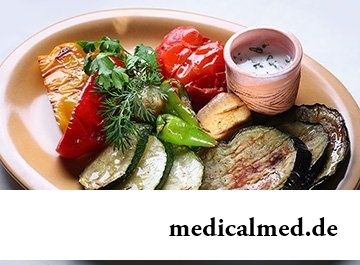 Vegetables are an important component of a daily diet and a source of cellulose, vitamins and minerals.
Vegetables are an important component of a daily diet and a source of cellulose, vitamins and minerals.
Caloric content of fresh vegetables
It is important to know the caloric content of vegetables to people with the excess weight wishing to lose weight. Drawing up a kalorazh of a diet happens taking into account all of diet components. Calories in vegetables are expected most often 100 g of weight of products. Now it is possible to find different versions of the online calculators allowing to calculate the necessary daily caloric content of a diet depending on a floor, the initial and desirable weight, a kind of activity and age, and also to learn how many calories in vegetables of a specific dish.
It is known that vegetable food is less caloric in comparison with animal products. It does vegetables by a valuable dietary product. Separate vegetable cultures can be combined in the most different options that allows vegetable salads to become for weight loss that dish which diversifies a daily diet.
Some examples of caloric content of fresh vegetables (kcal on 100 g of a product):
- Eggplant – 24;
- Green peas – 72;
- White cabbage – 28;
- Potatoes – 83;
- Onions – 43;
- Carrots – 33;
- Cucumbers – 10;
- Sweet pepper – 27;
- Parsley greens – 45;
- Garden radish – 20;
- Tomatoes – 15;
- Salad – 14;
- Siliculose haricot – 32;
- Garlic – 106.
Caloric content of vegetables can sometimes be rather high, first of all it is possible to carry to them bean (peas, haricot, beans) and vegetables rich with starch (for example, potatoes). They can be included in a food allowance on a diet only periodically, replacing with them other high-calorific dishes. Watery vegetables – the most low-calorie (for example, cucumbers, tomatoes), recommend to use them daily. Vegetable salads from them, among other things, are valuable to weight loss the contained structured water.
It is important to remember that the caloric content of vegetable salad is influenced by with what it is filled. Mayonnaise, fat sour cream or sauce considerably increase the caloric content of vegetables therefore on a diet it is the best of all for people to fill salad with vegetable oil (sunflower, olive, etc.) or it is even better – lemon juice.
Caloric content of stewed vegetables
Except fresh vegetables, at a diet there are always thermally processed.  For those people who keep to a low-calorie diet vegetables are recommended to be welded or extinguished. Heat treatment allows to facilitate digestion of many of them though at the same time a number of useful vitamins and other biological substances collapses. But stewed vegetables create feeling of satiety and at the same time keep low caloric content. So, the caloric content of vegetable salad of vinaigrette makes only 92 kcal on 100 g. It is possible to improve taste of stewed vegetables spicy herbs and vegetables – a basil, garlic, onions, a thyme, etc.
For those people who keep to a low-calorie diet vegetables are recommended to be welded or extinguished. Heat treatment allows to facilitate digestion of many of them though at the same time a number of useful vitamins and other biological substances collapses. But stewed vegetables create feeling of satiety and at the same time keep low caloric content. So, the caloric content of vegetable salad of vinaigrette makes only 92 kcal on 100 g. It is possible to improve taste of stewed vegetables spicy herbs and vegetables – a basil, garlic, onions, a thyme, etc.
Vegetables dishes turn out more tasty if to combine them with each other, for example, in the form of vegetable stew. It can be used both in the form of an independent dish, and in the form of a garnish. Caloric content of stewed vegetables will be summed up from the caloric content of separate products in its structure – potatoes, green peas, tomatoes, a cauliflower and sweet red pepper. At desire the list of ingredients can be added or changed. It is also useful to eat to a thicket cabbage – even in a stewed look it is a rich source of phytalbumin, vitamin C and food fibers (cellulose) improving work of intestines.
Caloric content of vegetables allows to include them in a diet of patients with obesity every day, without worrying about increase in weight.
To tell even the shortest and simple words, we involve 72 muscles.

What they, women? Beautiful, gentle, passionate and at the same time windy, gusty, and nervous. And what is stranger: all эт...
Section: Articles about health
The sclera and mucous membrane of an eye are intensively supplied with blood vessels which problem - to saturate nervous tissues of body with nutrients and oxygen. In a normality vessels are almost not noticeable, however at their expansion (owing to истонч...
Section: Articles about health
Separate food - the system of meal based on digestion physiology which is carried to improvement methods. According to nutritionists, the separate use of the carbohydrate and proteinaceous products demanding different conditions of assimilation helps to get rid of diseases of digestive tract and serves as prophylactic from a diabetes mellitus, arthritis, food allergies, cholelithiasis and many other frustration. The essence of salutary effect of a method consists in most Kacha...
Section: Articles about health
Eyes – one of the most vulnerable areas on a face therefore age changes concern them first of all. Whether it is possible to keep a pier...
Section: Articles about health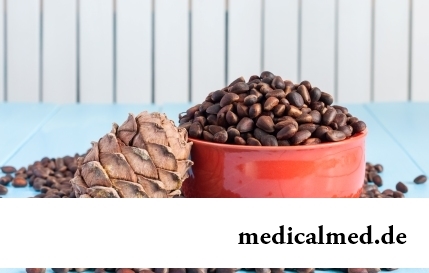
The hysteromyoma is diagnosed more than at a third of women 35 years are more senior. This high-quality new growth which at early stages successfully resolves by means of medicines. It is necessary to resort to an operative measure only in those a case...
Section: Articles about health
Statistically cystitis 25-30% of women up to 40 years have. With age this indicator raises, besides many do not get to statistics because do not see a doctor. The most sad that after the regular visits to doctors, long reception of antibiotics and life in the mode "it is necessary to take care" cystitis all the same is returned to a half of women. Symptoms of cystitis are unambiguous and it is impossible to confuse them with anything: bladder pain, burning at an urination, frequent desires to go to a toilet, a vynuzhd...
Section: Articles about health
Statistically, can only one of ten of our compatriots brag of a decent condition of an oral cavity. On среднестатистич...
Section: Articles about health
The modern person not always manages to find housing in the environmentally friendly region and such work which would not do harm to health. With food stuffs at first sight the situation is much better: shops are overflowed with goods which are positioned пр...
Section: Articles about health
There comes the season of issues. Many Russians already dream of outdoor recreation, trips, beautiful seaside beaches. At this time there is no wish to think of problems with health and other unpleasant things, however there are subjects which require attention. In the summer repeatedly the risk increases to ache with some very dangerous illnesses, we also will talk about them today....
Section: Articles about health
More than a half of the married couples which faced prostatitis – leave. The new broadcast "Female View of Prostatitis" will help to learn...
Section: Articles about health
The popular expression "run from a heart attack" became the motto of the people supporting active lifestyle. Moreover, run became a peculiar fashionable tendency: sales of racetracks and the accompanying goods for run are at permanently high level. Really...
Section: Articles about health
It is difficult to revaluate importance of kidneys for an organism. These bodies not only perform work on purification of blood of decomposition products and removal of excess liquid. They are responsible also for production of some hormones necessary for maintenance of a normality of a bone tissue, and also for a producing red blood cells – erythrocytes....
Section: Articles about health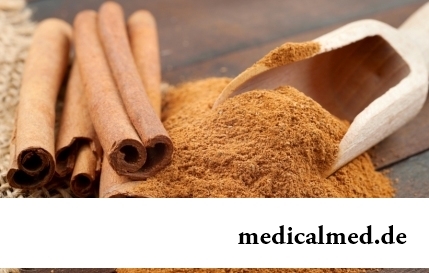
Ayurveda - the most ancient tselitelsky practice which came to us from India. It represents the doctrine about maintenance physical, ps...
Section: Articles about health
History of use of an anesthesia during operations contains more than 160 years. Annually in the world hundreds of thousands of surgical interventions during which to patients the substances immersing them in a dream and saving from pain are entered are carried out. Using an anesthesia to these...
Section: Articles about health
Tea is loved and use almost everything. This drink has tonic properties, contains the tannins capable to suppress activity of causative organisms. Recently great popularity was gained by teas with vegetable additives. The medicative herbs, spices and fruit which are a part of such mixes enrich drink with vitamins and microelements, increasing its nutritional value and creating additional curative effect....
Section: Articles about health
It would seem, to buy drugs in Moscow does not make a problem – a drugstore, and not one, is available for each resident of the capital in step a toast...
Section: Articles about health
Life of the modern woman is very difficult. Opportunities to realize itself are wide: it not only education and career, but also the most various hobbies from sport before needlework. It is not less important to build private life, paying an attention maximum to children, the husband, parents, e...
Section: Articles about health
Antibiotics - - it is possible to call the chemical compounds suppressing growth of bacteria the break in the field of medicine which allowed to save mankind from many diseases incurable earlier: tuberculosis, plague, syphilis and many others. The contribution of drugs to rescue of people from epidemics of dangerous infections is huge, however at careless use antibiotics are capable to cause to an organism serious damage. Negative action can be shown in the form of easing of immunity, disturbance of balance of microflora in кишеч...
Section: Articles about health
Dietary supplements (dietary supplements) for the last decades were so thoroughly included into our life that, apparently, it is already impossible on...
Section: Articles about health
Cellulitis - very widespread cosmetic shortcoming which arises approximately at 80% of women sooner or later. Emergence it is connected with change of structure of a hypodermic fatty layer. At the same time on the surface of skin at first there are roughnesses (cambers...
Section: Articles about health
The Genetically Modified Organisms (GMO) are plants or animals (as a rule, agricultural) to whose genotype purposeful changes were made. Opposition of supporters and opponents of inclusion of such organisms in foodstuff always was very acute. Not only scientists and dietitians, but also a large number of the people who are not specialists in this question are involved in active disputes today....
Section: Articles about health
We live during an advertizing era. Daily each person receives a solid portion of persuasive councils about what to eat to be здо...
Section: Articles about health
Household skills which to us so diligently imparted in the childhood it appears, not always bring only benefit. According to results of the last researches, some habits which for a long time were considered useful and even necessary can become...
Section: Articles about health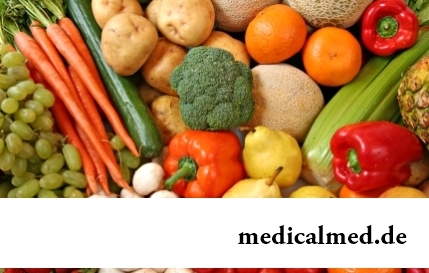
Color of plants is caused by presence at them of certain chemical compounds. Let's talk about what is meant by various colors of vegetables and fruit and what properties they give them....
Section: Articles about health
To look healthy and means well-groomed not only to be pleasant to people around, but also to feel strong, sure and taken place. To Spa...
Section: Articles about health
Dogrose – one of the most widespread adornment and medicinal plants growing practically in all territory of our country. To most of Russians it is a beautiful bush it is known, first of all, as a source of fruits, extremely vitamin-rich....
Section: Articles about health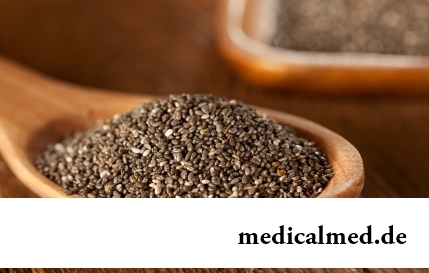
The chia plant, or the Spanish sage, is from South America. The indigenous people of the continent since ancient times used its seeds in food: small, but very nutritious kernels, in a form the reminding fasolina. Indians knew about useful properties of seeds of a chia, and applied them to maintenance of vitality and increase in endurance before serious exercise stresses....
Section: Articles about health
